You’re Sure to Find a Good Read
Why do we read books?
Perhaps it is to understand the world and find our place in it, to learn, to explore emotions and human relationships.
Maybe it is to escape.
Whether hardcover, paperback, or electronic format, books are windows into lives and experiences other than our own. This late-summer reading roundup offers a series of book reviews that are less about science editing and writing and more about recreation and enjoyment. The books in the following collection will transport you to Denmark, England, Inner Mongolia and other Asian locales, Ethiopia, and Seattle.
They explore the experiences and consequences of war, human interactions with nature, international intrigue, interpersonal relationships, medical history, and even some light-hearted observations on writing and life. Take a break, enjoy a good book, and see where it will lead you.
SUSAN M SHIRLEY is a freelance science editor in Corpus Christi, TX.
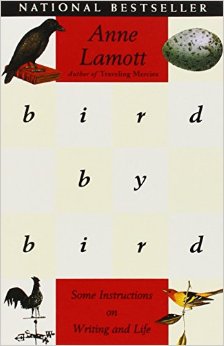
If readers expect this book to be like other how-to-write books, they will be surprised.
Instead of how-to guidelines, author Anne Lamott presents a compilation of notes and experiences from her writing workshops. She talks about productive writing, motivation for writing, overcoming down times, and strategies for identifying story ideas.
As readers share in Lamott’s writing life, they learn how to write better themselves. Though not intended primarily for science writers, the book discusses topics applicable to writers in all genres, such as perfectionism, the importance of feedback, finding your voice, and overcoming writer’s block.
Unlike other writing books, Bird by Bird stands out as unique writing advice because Lamott creatively and humorously explains the basics of writing and important key points to guide novice writers, as well as those in need of fresh motivation for their creativity.
This book is enjoyable and well suited for summer reading. Though some people may find its dark humor disturbing, I found the book fun to read, and its brevity, no doubt, was an added bonus!
—Wura Aribisala
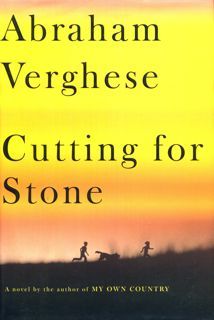
2009. 541 PAGES. ISBN-13: 978-0-375-41449-7.
What makes a novel a great summer read, compelling one to keep turning the pages (or the electronic equivalent) long past a late sunset?
In addition to effective use of suspense, elements tend to include, for me, characters one can care about, transport in time and place, and (I admit it) professional tie-ins.
Cutting for Stone, by physician and writer Abraham Verghese, offers everything on my list. Set largely in Ethiopia, where Verghese spent his early years, this medical novel and family saga has an engaging plot built deftly on medical facts and historical events.
It also integrates ethical issues—so much so that the book could serve well in a medical humanities course integrating literature, history, international health, and bioethics.
And science editors might especially relish the section in which an Indian physician long employed in an impoverished Addis Ababa hospital publishes a case series in The New England Journal of Medicine. The interchange in which the physician defends to the journal editor his choice of an eponym incorporating the name of a “humble compounder” is a particular delight.
Highly recommended.
—Barbara Gastel
BARBARA GASTEL is a professor at Texas A&M University, knowledge community editor for AuthorAID at INASP, and a former editor of Science Editor.
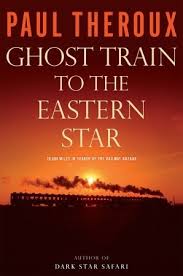
This recent offering from the well-known travel writer chronicles his months-long trip, mostly by rail, from London across Eastern Europe, central and southern Asia, Japan, Siberia, and back.
Theroux retraces a journey he made 30 years ago and wrote about in The Great Railway Bazaar. Older now, he reflects on events in his life at the time of his first journey and on the political, economic, and emotional changes that have occurred in the places and people he revisits. He describes India’s technological revolution, Myanmar’s dictatorial oppression, Cambodia’s brokenness, Thailand’s beauty, and Vietnam’s resurgence. He also explores Japan’s strange juxtaposition of modern and ancient after the war, and his descriptions of Siberia’s winter and gulags often are haunting.
The author has mellowed with time, and his notoriously caustic and cynical diatribe has been replaced with a more humane outlook on the world, its problems, and its glories.
He forgoes comforts and luxury to travel with locals and experience their lifestyles, opinions, customs, behavior, and food and drink.
As an author, he often visits with literary artists along the way and incorporates their insights into his narrative. If you can’t travel, this book is a sublime railway escape to a distant and exotic world.
—Susan M Shirley
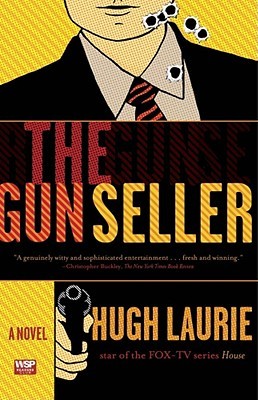
WASHINGTON SQUARE PRESS; 1998. 368 PAGES. ISBN-13: 978-0-671-02082-8.
He’s not a doctor, but he plays one on TV.
Actor, director, and composer Hugh Laurie (star of the television series “House”) added novelist to his CV with his book The Gun Seller. This debut novel tells the tale of international intrigue through the eyes of retired British army officer Thomas Lang.
We follow the former Scots Guard as his quiet life as a freelance bodyguard is turned upside down and he is thrown into a mix of arms dealers, rogue American spies, and international terrorists. This spoof of the traditional spy novel feels like a James Bond story in which 007 worked for Monty Python’s Ministry of Silly Walks instead of British intelligence.
Full of miscues and misadventures, the book twists and turns its way through London, Prague, and Casablanca as the characters pursue an experimental weapon. The result is a fun, fast-paced, and witty narrative perfect for both the beach and the airport.
—George Hale
GEORGE HALE is a science and technology journalism graduate student at Texas A&M University.
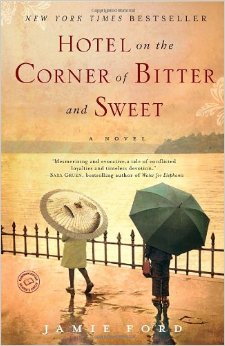
ISBN-13: 978-0-345-50534-7.
Today, the basement of a tall, brick hotel on a Seattle street corner still safeguards reminders of a dark period in US history.
Home to countless Japanese immigrants in the early 20th century, the Panama Hotel is pivotal as the Hotel on the Corner of Bitter and Sweet, Ford’s fictional story of friendship between a young Chinese-American boy, Henry Lee, and a Japanese-American girl, Keiko Osabe. They meet in 1942 at Rainier Elementary School, where Henry’s father has sent him to learn English. Their friendship grows despite his father’s hatred of the Japanese because of atrocities committed against Chinese civilians after the fall of Nanjing in 1937.
Sheldon is Henry’s other friend, a black saxophonist who plays jazz on the street along Henry’s route to school. Jazz, a musical metaphor for the blending of cultures in America, is a recurring theme in this novel. But Henry’s and Keiko’s lives implode when Roosevelt signs Executive Order 9066, which leads to evacuation and internment of millions of Japanese-Americans, including Keiko and her family.
With Sheldon’s help, Henry visits her in Camp Harmony, but he eventually loses contact with Keiko. Forty years later, Henry learns that renovation of the longclosed Panama Hotel has uncovered items that were stored in the basement for safekeeping by Japanese heading for internment camps. He searches for Keiko’s family possessions, hoping for a clue to her whereabouts and a rekindling of their childhood friendship.
This tender story is both bitter and sweet, as the title suggests, and is a vivid reminder of the far-reaching sorrows of war.
—Susan M Shirley
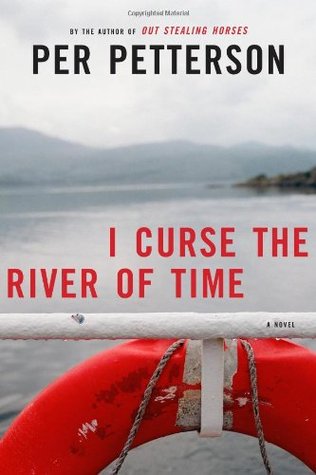
ISBN-13: 978-1-55597-556-2.
The title of this novel, by the author of Out Stealing Horses, derives from a poem by Chairman Mao, a hero of the first-person narrator, Arvid Jansen.
But the hugeness of ocean crossings and shorelines predominates, rather than that of any river. Following his dying mother south from Oslo to the family’s old summer place in Denmark, Arvid grapples, on the ferry and off, over several bleak November days, with their fraught relationship— bridged mainly by the films and novels they both love.
He leapfrogs, dizzyingly, between the past and present, mulling over prickly turning and tipping points in his Cold War childhood, his abortive college days, his work in a factory and in the Communist Party, his early bliss with the woman who now is divorcing him, and his outings with his young daughters.
I was drawn into Arvid’s emotional eddies, yet I was glad I was on dry land, safely moored in my screened-in, treerimmed porch, instead of on or near the “taut … blue-grey” sea (p. 15) with him. I wearied of his, and his mother’s, continual cigarettes and drinks. And though I ached for him in his angst after being dumped by his wife, “the woman who had been my life for fifteen years, but did not want me any more” (p. 58), I agreed with his cancerstricken mother’s final take on him: “He’s thirty-seven years old, but I wouldn’t call him a grown-up. That would be an exaggeration. … I don’t know what to do with him” (pp. 224–225).
Still, Petterson’s wry, nonsuperficial portrayal of life’s many unhappy endings is hauntingly honest: “anything could happen, to anyone, if the one it was happening to had a trusting heart” (p. 82).
—Mary E Knatterud
MARY E KNATTERUD (based in St. Paul, MN) is a research associate professor at the University of Arizona, Tucson, and the founding editor of the “Peer-Renewed” poetry column in Science Editor.
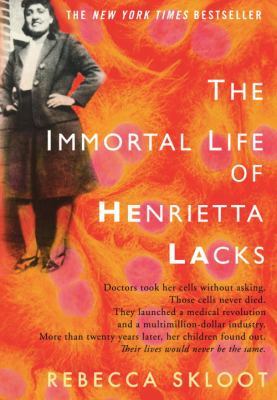
The Immortal Life of Henrietta Lacks is an extraordinary nonfictional account of an African-American woman and her family that is interspersed with an exploration of science, ethics, and race.
Henrietta Lacks died in 1951, but cells cultured from her cervical biopsy lived on as “HeLa”. Neither Lacks nor her family, however, were informed about the collection of the cells or their use in research worldwide. Skloot’s narrative alternates between the history of science and cell culture and a recounting of Lacks’ life and Skloot’s own encounters with Lacks’ family.
Details about US culture in the 1950s (segregation was law) as well as the evolution of ethical and legal guidelines over the past half-century are sad reminders of racial discrimination, and medical missteps. The legacy granted to the Lacks family themselves includes poverty, lack of education, and insufficient health care—a sad irony considering the contribution of their mother’s cells to science.
Finding the human face behind this famous cell line is the dominant theme of Skloot’s work. She treats her human subjects with respect, compassion, and empathy. It is clear Skloot came to care very deeply about the Lacks’ family, and I know I certainly did by the end of the book. This work is incredibly detailed, and Skloot succeeds in finally giving the Lacks family a voice.
—Rebecca S Benner
REBECCA S BENNER is the director and managing editor of Obstetrics & Gynecology in Washington, DC, and the former editor of Science Editor.
